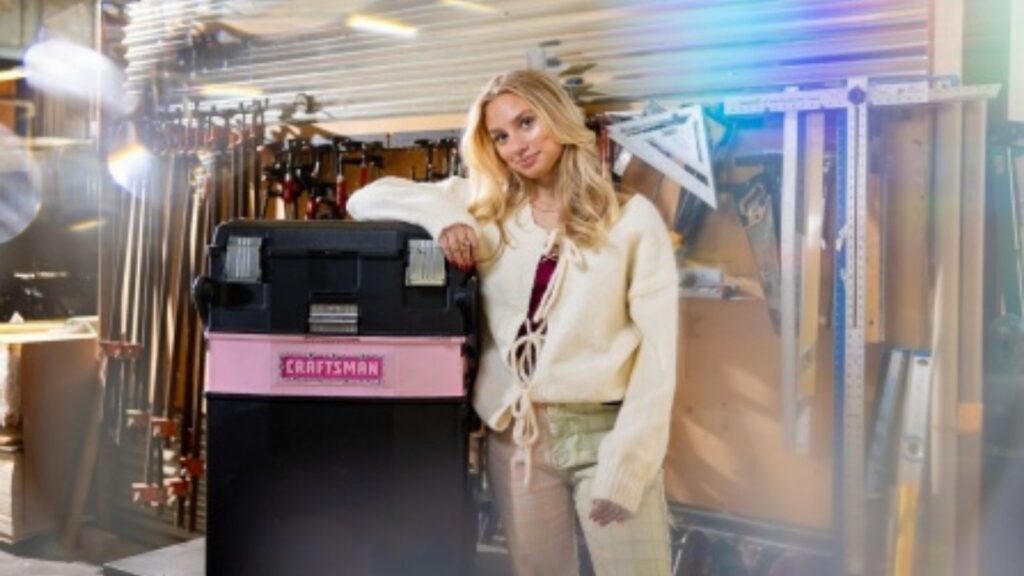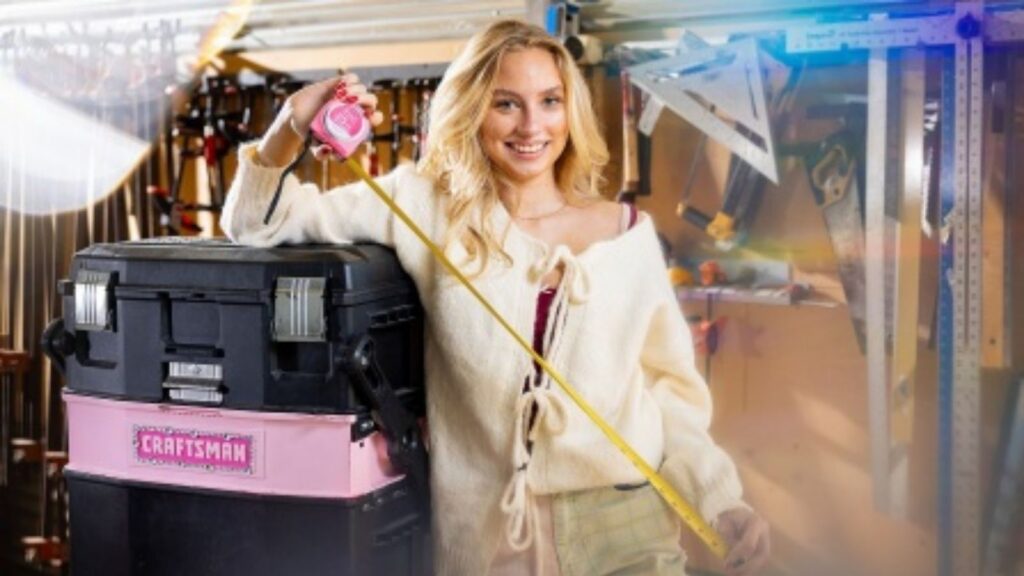
BUFFALO – Maddie Stafford has a simple question: “Why can’t a blonde girl hold a drill?”
Stafford is a student in the architecture master’s program at the University at Buffalo and she’s on a mission to raise awareness about the importance of representation in traditionally male dominated fields like architecture and construction.
Stafford is organizing an event Oct. 18 in the School of Architecture and Planning to give female students an opportunity to let their identities shine by decorating the signature red Craftsman toolboxes that are ubiquitous among architecture students in the school. She’s found a supportive partner in Craftsman, which donated 10 toolboxes for the event after she reached out to the company.
For Stafford, the toolbox represents far more than just a handy place to store the accoutrements of architecture school. It’s symbolic of the constant battles many women in the field have to fight to gain respect and representation.
Early exposure to building
Born and raised in a small town in Central New York, Stafford knows her way around a hardware store. She’d go with her dad to hardware stores frequently as a little girl. Plus, her grandpa had a small wood shop in his garage and encouraged Stafford and her two brothers to watch what he was working on any time they came over.
“He would always help us build things,” she says. “We built a scooter out of old two-by-fours and utility cart wheels one day. We still have it. It’s so cute.”
That early exposure to making inspired Stafford’s interest in an art-based career. She liked that architecture also provided a strong sustainability element, along with mathematical, financial and structural components, and she decided to come to UB.
In the summer before her first year of the architecture program, Stafford had an experience at a national hardware store chain in her hometown that infuriated her, ultimately sparking her passion for changing how people think about women in construction. Stafford and her dad went to the store and as he went off on his own to get a few items, Stafford headed over to the tools department to look for a toolbox.
“I remember exactly what I was wearing: a pink crop top and these jeans that were pink, yellow and green plaid,” she says. “I think about four employees came up to me and asked if I needed help. It was just really interesting. I knew it was because I was wearing a girly outfit and I was alone. I could tell they assumed I didn’t know what I was doing, like I was this lost puppy or something.”
It was an uncomfortable experience, one that gave Stafford the impression that people felt that she didn’t belong there.
“I knew it was because I was wearing a girly outfit and I was alone,” Stafford says of a memorable trip to the hardware store just before her first year of undergrad. “I could tell they assumed I didn’t know what I was doing, like I was this lost puppy or something.” Photo: Douglas Levere

500 questions
“It’s a pretty common experience for women,” she continues. “It’s all over the internet, too. Women will make jokes like ‘I’m about to go to the hardware store to get some spray paint, can’t wait to get asked 500 questions.’ Men don’t get treated like that. If I had walked into that store wearing just plain jeans, a T-shirt and sneakers, I probably would not have been asked as many questions.”
Stafford is quick to add that mom-and-pop hardware stores have, in her experience, been far more welcoming.
In the fall of her junior year, Stafford spraypainted her red toolbox pink and bedazzled it with gems and jewels. It wasn’t just to make it stand out – there was a larger point to be made. “Every brand has their staple color and in construction it’s the classic red, orange or yellow,” she says. “Why? Because they don’t think that people who like pink and purple would buy their products.”
Despina Stratigakos, PhD, a SUNY Distinguished Professor in the Department of Architecture at UB, says Stafford’s work is inspiring.
“Maddie’s bedazzled Craftsman toolbox demonstrates the incredible power of everyday objects — literally, the toolkits of our daily lives — to change gendered attitudes. All it takes is a twist, a layer of pink paint and some sparkle, and you see things with new eyes,” Stratigakos says.
Inspiration from Architect Barbie
Stafford found inspiration — and empowerment — in a guest lecture in Stratigakos’ intro to architecture course last year. As a teaching assistant for the class, Stafford listened intently as Stratigakos and Kelly Hayes McAlonie, an architect and UB’s director of campus planning, talked about their work in 2011 co-creating Architect Barbie with Mattel.
“Barbie was just as big a part of my childhood as watching my family work in the wood shop,” Stafford says. “I took a lot of inspiration from their lecture and that’s when I decided to reach out to Craftsman.”
Her message made its way to Audrey Van de Castle, senior director for operational excellence technology at Stanley Black & Decker, Inc., which owns the Craftsman brand. “I remember one of our first meetings on Zoom, Audrey told me about this shirt she has that says ‘Craftswoman’ and I was like, ‘You are my person.’ She’s been amazing,” Stafford says.
While Stafford hopes to create change, there is much work to be done. She recalls a holiday season a few years ago when a national tool brand (not Craftsman) debuted mini toolboxes in pink and purple.
“They sold out really fast,” she says. “But they didn’t sell out because women were buying them. They sold out because these mini toolboxes were being advertised as something for a husband to get his wife for Christmas to use as a jewelry box. It just made me so mad. It was like, ‘Oh, this would be so funny to get for your wife.’”
One of Stafford’s brothers bought her one of these toolboxes for her birthday this past summer, unaware of her strong stance on it. She now uses it to store smaller knives.
She also used it as an opportunity to educate her brother in the same way she’s hoping to tell the world it’s OK for women in architecture and construction to be themselves, whether that’s wearing lip gloss and a skirt to the job site or jeans and sneakers, or carrying your sparkly toolbox.
“Maddie is using the power of design in a gendered environment to claim space not only for herself but also for others,” says Stratigakos. “She is asserting her right to be herself — to be comfortable and to thrive — not by blending in, but by sparkling out.”


